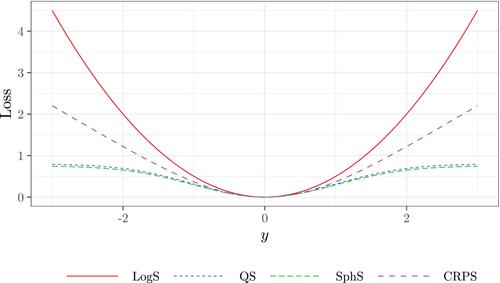分布预测评分规则的规模和测量误差敏感性
IF 2.3
3区 经济学
Q2 ECONOMICS
引用次数: 0
摘要
摘要 本文研究了数据重缩和测量误差对分布预测评分规则的影响。首先,我证明了所有常用的分布预测评分规则对数据重定标都是稳健的。其次,与基于对数得分的预测排序相比,基于连续概率得分的预测排序对总测量误差的敏感性更低。与理论结果相辅相成的还有一项与频繁修订的美国季度国内生产总值(GDP)增长数据相一致的模拟研究、一项与金融市场波动性相一致的模拟研究,以及一项预测 S&P 100 成分股已实现方差的经验应用。本文章由计算机程序翻译,如有差异,请以英文原文为准。

Scaling and measurement error sensitivity of scoring rules for distribution forecasts
This paper examines the impact of data rescaling and measurement error on scoring rules for distribution forecast. First, I show that all commonly used scoring rules for distribution forecasts are robust to rescaling the data. Second, the forecast ranking based on the continuous ranked probability score is less sensitive to gross measurement error than the ranking based on the log score. The theoretical results are complemented by a simulation study aligned with frequently revised quarterly US gross domestic product (GDP) growth data, a simulation study aligned with financial market volatility, and an empirical application forecasting realized variances of S&P 100 constituents.
求助全文
通过发布文献求助,成功后即可免费获取论文全文。
去求助
来源期刊

Journal of Applied Econometrics
Multiple-
CiteScore
3.70
自引率
4.80%
发文量
63
期刊介绍:
The Journal of Applied Econometrics is an international journal published bi-monthly, plus 1 additional issue (total 7 issues). It aims to publish articles of high quality dealing with the application of existing as well as new econometric techniques to a wide variety of problems in economics and related subjects, covering topics in measurement, estimation, testing, forecasting, and policy analysis. The emphasis is on the careful and rigorous application of econometric techniques and the appropriate interpretation of the results. The economic content of the articles is stressed. A special feature of the Journal is its emphasis on the replicability of results by other researchers. To achieve this aim, authors are expected to make available a complete set of the data used as well as any specialised computer programs employed through a readily accessible medium, preferably in a machine-readable form. The use of microcomputers in applied research and transferability of data is emphasised. The Journal also features occasional sections of short papers re-evaluating previously published papers. The intention of the Journal of Applied Econometrics is to provide an outlet for innovative, quantitative research in economics which cuts across areas of specialisation, involves transferable techniques, and is easily replicable by other researchers. Contributions that introduce statistical methods that are applicable to a variety of economic problems are actively encouraged. The Journal also aims to publish review and survey articles that make recent developments in the field of theoretical and applied econometrics more readily accessible to applied economists in general.
 求助内容:
求助内容: 应助结果提醒方式:
应助结果提醒方式:


